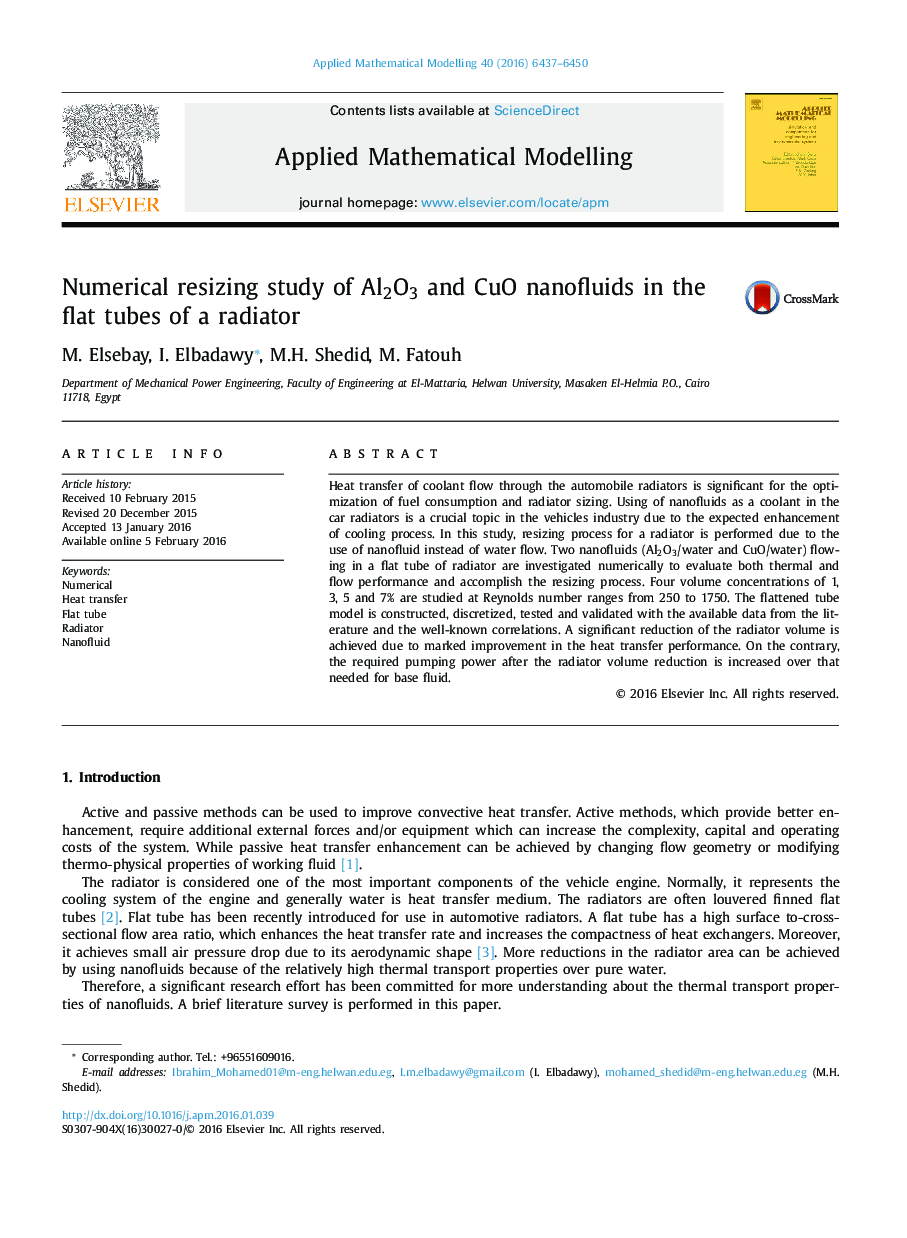| Article ID | Journal | Published Year | Pages | File Type |
|---|---|---|---|---|
| 1702858 | Applied Mathematical Modelling | 2016 | 14 Pages |
•The effect of using nanofluids in a vehicle radiator was investigated.•Increasing the nanoparticles volume concentration leads to improve heat transfer.•The pumping power increases with increasing nanoparticles volume concentration.•The radiator size using nanofluids is redesigned to loss the same heat as water.•Al2O3 achieves higher transfer rate and lower pumping power than CuO.
Heat transfer of coolant flow through the automobile radiators is significant for the optimization of fuel consumption and radiator sizing. Using of nanofluids as a coolant in the car radiators is a crucial topic in the vehicles industry due to the expected enhancement of cooling process. In this study, resizing process for a radiator is performed due to the use of nanofluid instead of water flow. Two nanofluids (Al2O3/water and CuO/water) flowing in a flat tube of radiator are investigated numerically to evaluate both thermal and flow performance and accomplish the resizing process. Four volume concentrations of 1, 3, 5 and 7% are studied at Reynolds number ranges from 250 to 1750. The flattened tube model is constructed, discretized, tested and validated with the available data from the literature and the well-known correlations. A significant reduction of the radiator volume is achieved due to marked improvement in the heat transfer performance. On the contrary, the required pumping power after the radiator volume reduction is increased over that needed for base fluid.
